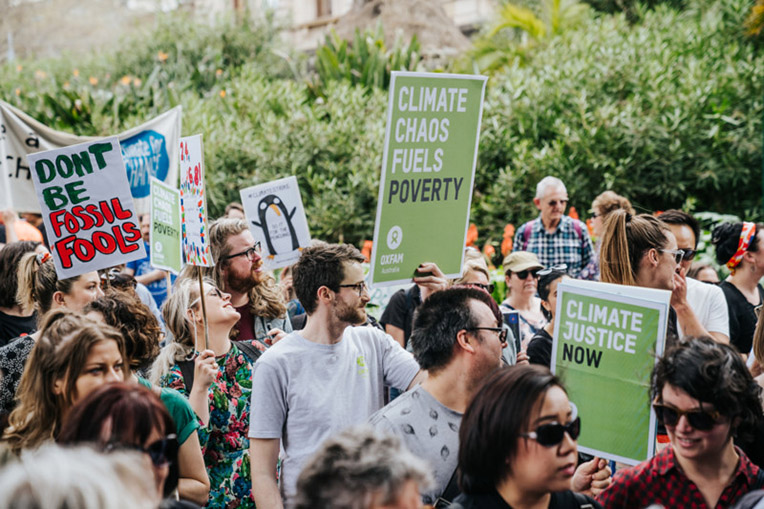
By Simon Bradshaw, Advocacy Lead
What a week!
After an incredible few days of action around the world, and with so much to take in, we thought we’d offer our top five take homes from this defining week in the fight for climate justice.
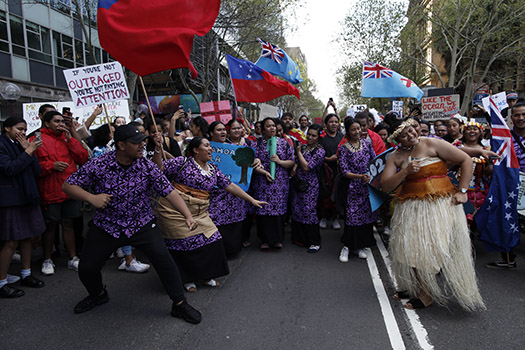
1. First, the climate crisis is now, more than ever before, a fight for human rights and survival. A fight that is being led by those on the frontlines – indigenous peoples, women’s movements, workers, young people, from the Pacific to Africa. Communities who, despite having done nothing to cause this calamity, are determined to lead and ensure we come through this as a more just global community. Over two days prior to Friday’s global strike, activists from around the world met for the Peoples’ Summit on Climate, Rights and Human Survival. This was a historic gathering, bringing together human rights defenders and environmental activists from around the world. Check out this agenda-setting declaration from this powerful alliance.
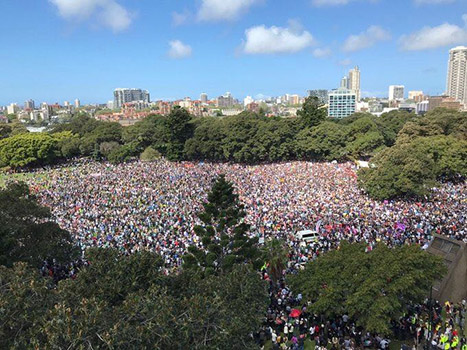
2. Then of course came Friday’s global #ClimateStrike – quite simply the biggest international day of action for climate justice the world has seen to date. This was truly a global moment, with events in over 160 countries, from Kiribati to Kenya. But this was different from previous global actions, not only in its scale and geographical spread. Ask any veteran of the climate justice fight, and they will tell you that something has changed in the past year. The way students around the world have stood up, organized and taken their future into their own hands, amidst all the terrifying climate disasters unfolding around the world, has changed everything and given hope that we might just get through this. But as Greta Thunberg told the US Congress earlier in the week: “Don’t tell us how inspiring we are, take action on climate change!”
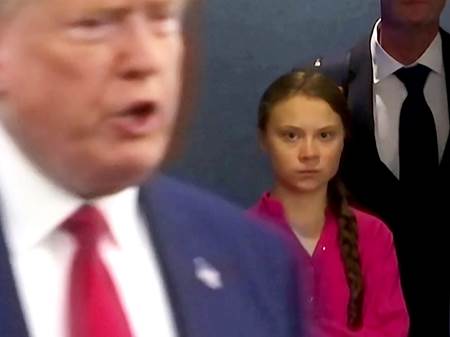
3. Next came the main event that this remarkable public mobilization had been geared towards – the UN Climate Action Summit on Monday. Arguably the biggest moment in international climate politics since the Paris Agreement in 2015 and designed to inject momentum back into government action. Specifically, for governments to come with plans to update their initial commitments to the Paris Agreement and to achieve zero emissions by mid-century. The day began with Greta Thunberg once again speaking truth to power and channelling the growing rage of enlightened youths worldwide.
UN Secretary General Antonio Guterres, who earlier this year, as part of the build-up to the summit, visited Fiji, Vanuatu and Tuvalu to shine a line on the extreme impacts of climate change in the Pacific and the actions of Pacific Island countries, was not messing about. “Come with a plan, not a speech” was his rallying cry ahead of the summit. This was not going to be another opportunity for leaders to simply restate their existing (and almost always inadequate) commitments. Only those countries bringing something new to the table would be given the opportunity to speak. So that meant no platform for Australia, with Scott Morrison dispatching Foreign Minister Marise Payne while our Prime Minister kept company with climate super villain Donald Trump. Frankly, and coming just weeks after Australia’s diplomatic train wreck in Tuvalu, Australia has never looked more isolated or out of touch on climate change.
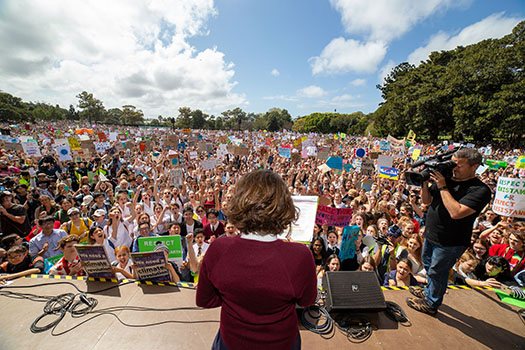
4. But putting aside our predictable disappointment with the Australian Governmentand the failure overall of the Climate Action Summit to yield substantial new commitments from the global community, let’s look at some of things that did happen on Monday. Who said what? What were the shining examples of governments rising to the challenge?
We’ve said it before, but it really is, by and large, those with the least responsibility for the climate crisis and the least economic might who are showing the rest of us how it is done. Even as they bear the brunt of climate impacts on a daily basis. Not surprisingly, the world’s ‘Small Island Developing States’, including those of the Pacific, were well represented. While making up less than one percent of the world’s population, they accounted for more than 15% of the countries invited to speak at the event.
Last year Fiji and the Marshall Islands became the first two countries in the world to declare their intention to strengthen their initial contributions to the Paris Agreement. And both were also among the first of the growing group of countries formally committed to achieving net zero emissions by 2050.
Meanwhile, India, having emerged as a global leader in renewable energy, is on track to exceed its existing commitment under Paris. It is showing that renewables are increasingly the path out of poverty. Were India were to go further and abandon plans to build new power plants, it would, as the world’s second most populous nation and fifth largest economy, become a true beacon of hope.
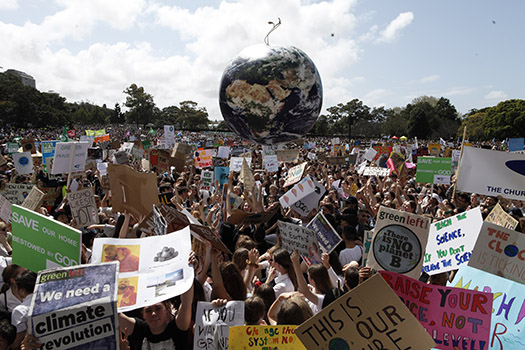
5. And to round off, let’s think about where this remarkable week sits in the longer journey, and what needs to come next.
You have probably time and again that we have around 11 years to roughly halve global climate pollution and get ourselves well on the path to zero emissions, or else risk of catastrophic climate damage. In reality, it is the decisions made over this next year, between now and the critical round of international negotiations at the end of 2020 (COP26) that are likely to determine whether we spiral into carnage or get on top of this defining challenge of our times and emerge from this crisis as a thriving and more equal global community.
Why is this such a crucial window? COP26 is the deadline for countries to review and strengthen their first contributions to the Paris Agreement (i.e. for Australia, our 2030 target), and to put in place long-term strategies for achieving zero emissions. Right now, put together, current commitments from governments around the world have us on a path to an unliveable 3°C+ of global heating.
There is nothing in the way of bending the curve of global climate pollution and getting us on the path to limiting warming to 1.5C and staving off a far worse catastrophe. Nothing except the ailing fossil fuel industries and the governments who side with them. We have the technology, and even the economics are on the side of the climate. And after last week, we might just have reached the tipping point in global public calls for action.
School strikers, you rock!